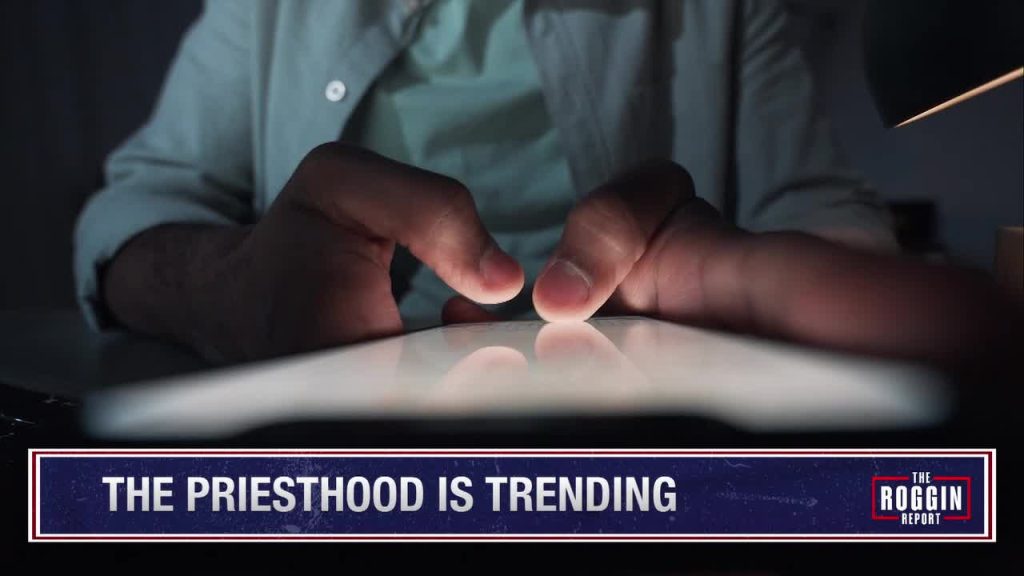Social Media’s Surprising Impact: Is the Priesthood Trending for Gen Z?
The hallowed halls of religious vocation, traditionally associated with quiet contemplation and solemn oaths, are experiencing an unexpected influx of interest from a generation known for its digital fluency and rapid-fire trends: Generation Z. While some may find it surprising, a growing number of young people are considering and pursuing paths to the priesthood and religious life, a phenomenon partly attributed to the pervasive influence of social media. Platforms like TikTok, Instagram, and YouTube are no longer just spaces for viral dances and meme culture; they’ve become unlikely tools for spiritual exploration, fostering communities of faith, and even showcasing the daily lives of priests and nuns in a way that demystifies religious vocation. This new accessibility, combined with a generation grappling with existential questions and searching for meaning in a turbulent world, has created a unique moment for religious institutions, offering both challenges and opportunities in connecting with a digitally native audience.
The traditional image of religious life, often shrouded in mystery and perceived as austere or inaccessible, is being rewritten by tech-savvy priests and nuns who are leveraging social media to offer a more personalized and relatable glimpse into their vocations. These individuals, sometimes referred to as “digital disciples” or “online evangelists,” create content that showcases the human side of religious life, sharing personal stories, reflections on faith, and even humorous anecdotes about their daily routines. By breaking down the perceived barriers between clergy and laity, these online platforms offer a window into a world that many young people may never have considered otherwise. This newfound transparency, coupled with the ability to directly interact with religious figures through comments and live streams, fosters a sense of connection and community that traditional outreach methods often struggle to achieve. Gen Z, raised in a culture of constant connectivity, finds this approachable format both engaging and inspiring.
Furthermore, the algorithm-driven nature of social media inadvertently amplifies religious content, exposing it to a wider audience than ever before. Hashtags like #CatholicPriest, #NunsofInstagram, and #CalledtoServe have garnered millions of views, creating a virtual ecosystem of faith-based communities where young people can explore their spirituality, ask questions, and find support from their peers. This organic growth of online religious communities is not limited to any particular faith, with representatives from Christianity, Islam, Judaism, and other religions utilizing digital platforms to connect with younger generations. The ability to share testimonies, discuss theological concepts, and engage in interfaith dialogue within the digital sphere has created a new dynamic in religious discourse, allowing Gen Z to actively participate in shaping the future of faith.
However, this intersection of faith and social media also presents unique challenges. The curated nature of online platforms can sometimes create an idealized, even romanticized, portrayal of religious life, potentially overlooking the sacrifices, struggles, and complexities inherent in such a commitment. This can lead to unrealistic expectations among those considering a vocation, requiring careful guidance and mentorship from established religious communities. Furthermore, the rapid spread of misinformation and the potential for online negativity pose risks to the sanctity of religious discourse. Addressing these challenges requires a proactive approach from religious institutions, fostering media literacy among young people and creating safe online spaces for genuine spiritual exploration.
The rise of “religious influencers,” while offering a powerful tool for outreach, also raises concerns about the potential for commodification of faith. Striking a balance between authenticity and the pressures of online engagement can be difficult, and the pursuit of followers and likes should never overshadow the core values of religious vocation. Religious institutions need to provide support and guidance to those navigating the complex landscape of social media ministry, ensuring ethical practices and maintaining the integrity of their message. Open conversations about the responsible use of digital platforms are crucial to mitigating these risks and fostering a healthy integration of faith and technology.
Ultimately, the growing interest in religious vocation among Gen Z, fueled in part by social media, represents a significant shift in the religious landscape. While the long-term impact of this trend remains to be seen, it underscores the importance of adapting to the evolving ways in which young people engage with faith. By embracing the opportunities presented by digital platforms while acknowledging the inherent challenges, religious institutions can effectively connect with a new generation seeking meaning and purpose in a constantly changing world. This requires a thoughtful and intentional approach, fostering genuine connections, addressing complex questions with nuance, and ultimately empowering young people to find their own unique path to spiritual fulfillment, whether that path leads to a religious vocation or not.


